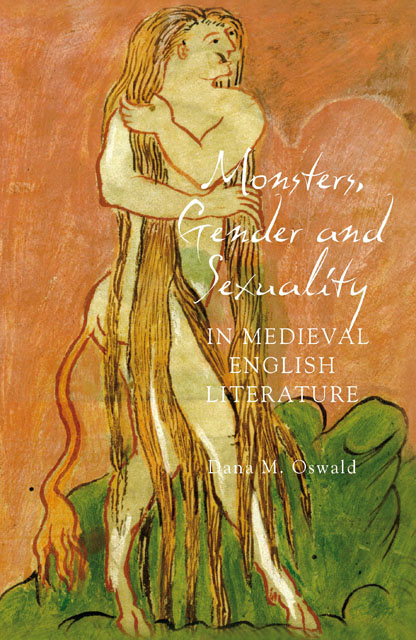Book contents
- Frontmatter
- Contents
- Dedication
- Acknowledgements
- List of Figures
- Introduction: Sex and the Single Monster
- 1 The Indecent Bodies of the Wonders of the East
- 2 Dismemberment as Erasure: the Monstrous Body in Beowulf
- 3 Circulation and Transformation: The Monstrous Feminine in Mandeville’s Travels
- 4 Paternity and Monstrosity in the Alliterative Morte Arthure and Sir Gowther
- Conclusion: Transformation and the Trace of the Monster
- Bibliography
- Index
2 - Dismemberment as Erasure: the Monstrous Body in Beowulf
Published online by Cambridge University Press: 01 March 2023
- Frontmatter
- Contents
- Dedication
- Acknowledgements
- List of Figures
- Introduction: Sex and the Single Monster
- 1 The Indecent Bodies of the Wonders of the East
- 2 Dismemberment as Erasure: the Monstrous Body in Beowulf
- 3 Circulation and Transformation: The Monstrous Feminine in Mandeville’s Travels
- 4 Paternity and Monstrosity in the Alliterative Morte Arthure and Sir Gowther
- Conclusion: Transformation and the Trace of the Monster
- Bibliography
- Index
Summary
ERASURES MARK a curious boundary in Old English texts. They manage a precarious balance between securing and sanitizing the monstrous body for viewers and articulating a clear division between the monstrous and the human. Artistic erasure works not to transform a body from monster to human, but rather to eliminate its most threatening elements while maintaining its monstrous essence. Like the monsters, called ‘micle mearcstapan’ (1348a) [great borderwanderers], of Beowulf, erasures exist in the figurative margins of artistic creation but construct the central meaning of the text in significant ways. In Wonders of the East, the removal of a monster's penis demonstrates its importance and therefore emphasizes, rather than simply removes, the monster's masculinity as well as his reproductive potential. Like artistic erasure, which is often visible if not always obvious, literary erasure calls attention to important features in a text's subject matter: for instance, if readers recognize a narrative moment in which a character leaves out a particular detail, they learn something about what that character wishes to highlight or to disguise. Similarly, readers can observe moments of revision or of what I term ‘never drawing’ in literary texts, moments which serve to reveal elements of anxiety or tension in the narrative. In working with medieval literary texts, scholars examine such moments of erasure when they determine which elements one manuscript includes that another does not. However, with a text like Beowulf, which exists in only one manuscript, Cotton Vitellius A.xv., erasures take place within the body of the narrative. In fact, the patterns of erasure in this poem point consistently to the bodies of Grendel and his mother, the border-wanderers. They literally wander the borders of Hrothgar's kingdom, living at the outskirts of the community both spatially and socially. But Grendel and Grendel's mother wander other kinds of borders. They tread the borders of humanity because they possess hybrid bodies; their forms exist precariously on the boundaries of the monstrous and the human, and, in Grendel's mother's case, as I shall demonstrate, on the boundaries of the female and the male. In Wonders, the possession of a monstrous and sexed body threatens the integrity of the human community and the human body, inviting the literal erasure of and revision to the body.
- Type
- Chapter
- Information
- Publisher: Boydell & BrewerPrint publication year: 2010



